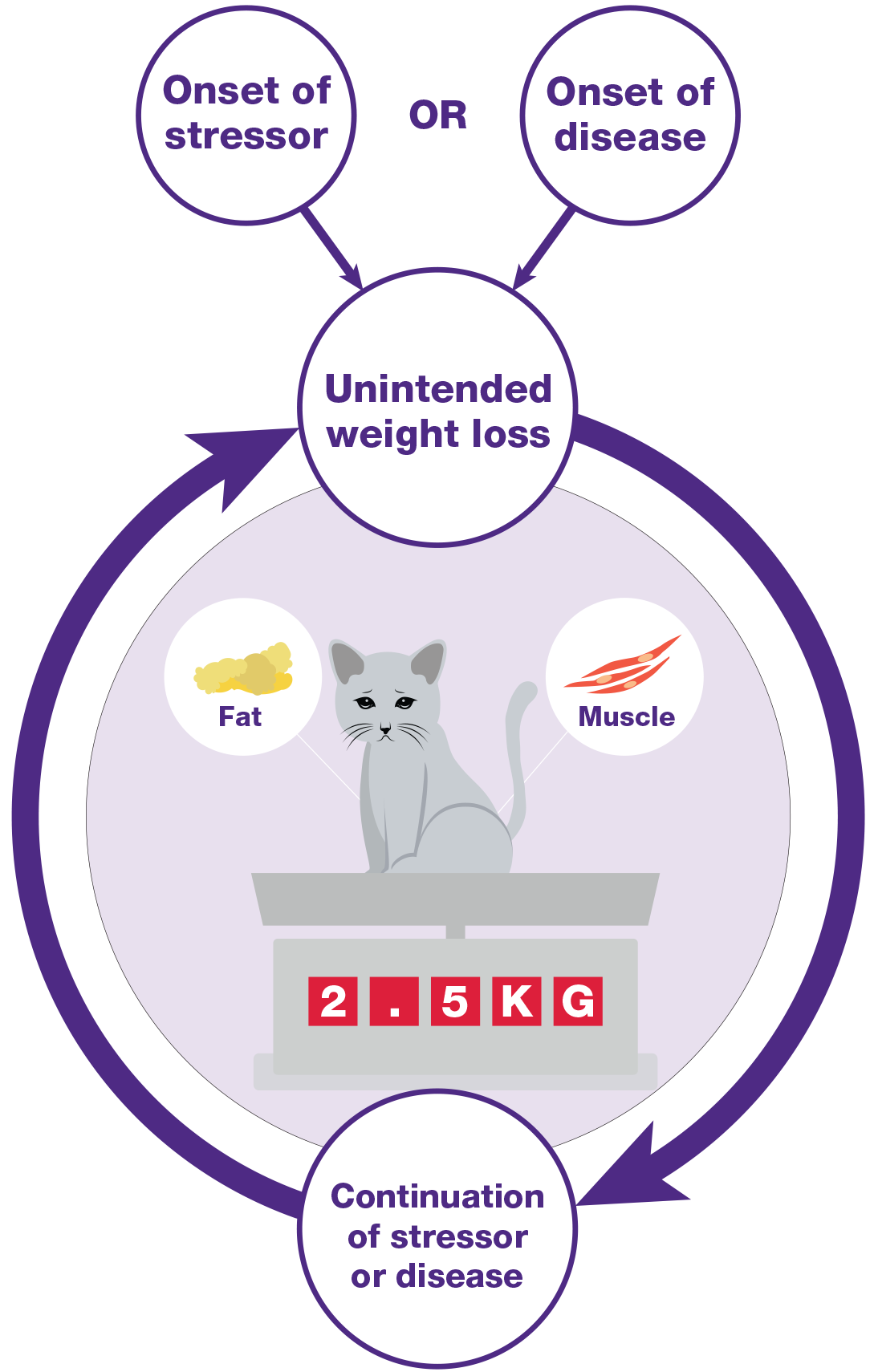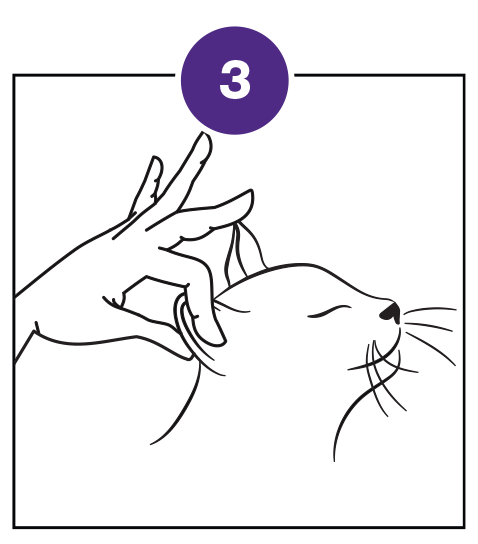Recognize the signs of unintended weight loss and learn how Mirataz® may help
Your cat’s weight loss could be caused by a variety of issues
A change in your cat’s appetite and unintended weight loss doesn’t always have a simple answer. It could be from non–disease-related stress, like a change in where they eat.1 It could be a reaction to psychological stress, like the disappearance of another pet.2 Or it could be the beginning of a serious disease, like hyperthyroidism, chronic kidney disease, or inflammatory bowel disease.3-5
Prolonged inadequate nutrition may be more detrimental to your cat than the underlying cause of their weight loss.
Do not use Mirataz in cats with a known hypersensitivity to mirtazapine or any of the excipients or in cats treated with monoamine oxidase inhibitors (MAOIs). For additional important safety information and product label click here.
You can help identify the early signs of weight loss at home
As you interact with your feline friend, observe their eating habits and take the time to note any changes in their body composition.
Take notice of changes in eating habits, including:
When petting your cat, check for:

If your cat is losing weight, it could be a sign of a more serious underlying disease. It’s important to talk to your veterinarian immediately about changes in your cat’s eating habits or weight.
Mirataz helps manage unintended weight loss in cats
As you and your veterinarian team up to determine the underlying cause of your cat’s weight loss, Mirataz may help your cat gain weight.6

How to apply Mirataz
Your veterinarian or a trained staff member should show you how to apply the first dose of Mirataz while you are at the veterinary clinic.


Step 1:
Wear disposable gloves. Twist cap on tube counterclockwise to open.

Step 2:
Apply even pressure on tube and squeeze a 1.5-inch line of ointment onto your gloved finger using the measured line on the carton or in the package insert.

Step 3:
Using your gloved finger, gently rub ribbon of ointment on inside pinna of the cat’s ear spreading it evenly over the surface. Dispose of used gloves after each application. If contact with your skin occurs wash thoroughly with soap and warm water.
After application, care should be taken that people or other animals in the household do not come in contact with the treated cat for 2 hours because mirtazapine can be absorbed transdermally and orally.
Alternate the daily application of Mirataz between the left and right inner pinna of your cat’s ears. Do not administer into the external ear canal. If desired, the inner pinna of your cat’s ear may be cleaned by gently wiping with a dry tissue or cloth immediately prior to the next scheduled dose. If a dose is missed, apply Mirataz the following day and resume daily dosing.
Mirataz was safe and well tolerated in clinical studies
In clinical studies, Mirataz was well tolerated and used in cats with unintended weight loss associated with a variety of underlying conditions.

What you should know upon discontinuing treatment with Mirataz
Upon discontinuation of Mirataz, it is important to monitor your cat’s food intake. Your cat’s food intake may lessen after discontinuation of Mirataz. If food intake diminishes dramatically (>75%) for several days or if your cat stops eating for more than 48 hours, contact your veterinarian.


Mirataz is indicated for the management of weight loss in cats.
Important Safety Information
Mirataz® (mirtazapine transdermal ointment) is for topical use in cats only under veterinary supervision. Do not use in cats with a known hypersensitivity to mirtazapine or any of the excipients. Do not use in cats treated with monoamine oxidase inhibitors (MAOIs). Not for human use. Keep out of reach of children. Wear gloves when handling/applying, wash hands after and avoid contact between the treated cat and people or other animals for 2 hours following application. Use with caution in cats with hepatic and kidney disease. Cat’s food intake should be monitored upon discontinuation. Safety has not been evaluated in cats less than 2 kg, less than six months of age or in breeding, pregnant or lactating cats. The most common adverse reactions observed during clinical trials were application site reactions, behavioral abnormalities (vocalization and hyperactivity) and vomiting. For product label, including complete safety information, click here.
References
1. Cornell Feline Health Center. Feeding your cat. Cornell University College of Veterinary Medicine. July, 2017. Available from: https://www.vet.cornell.edu/departments-centers-and-institutes/cornell-feline-health-center/health-information/feline-health-topics/feeding-your-cat. Accessed January 24, 2021.
2. Weight loss in cats. WebMD. https://pets.webmd.com/cats/weight-loss-in-cats#1. Published September 8, 2018. Accessed January 24, 2021.
3. Pittari J, Rodan I, Beekman G, et al. American Association of Feline Practitioners. Senior care guidelines. J Feline Med Surg. 2009;11(9):763-778.
4. Laflamme DP. Nutrition for aging cats and dogs and the importance of body condition. Vet Clin North Am Small Anim Pract. 2005;35(3):713-742.
5. Baez JL, Michel KE, Sorenmo K, et al. A prospective investigation of the prevalence and prognostic significance of weight loss and changes in body condition in feline cancer patients. J Feline Med Surg. 2007;9(5):411-417.
6. Mirataz® (mirtazapine transdermal ointment) [package insert], Rev. 05/2020.

US Patent 10,603,272
Mirataz® is a registered trademark of Dechra Ltd.





